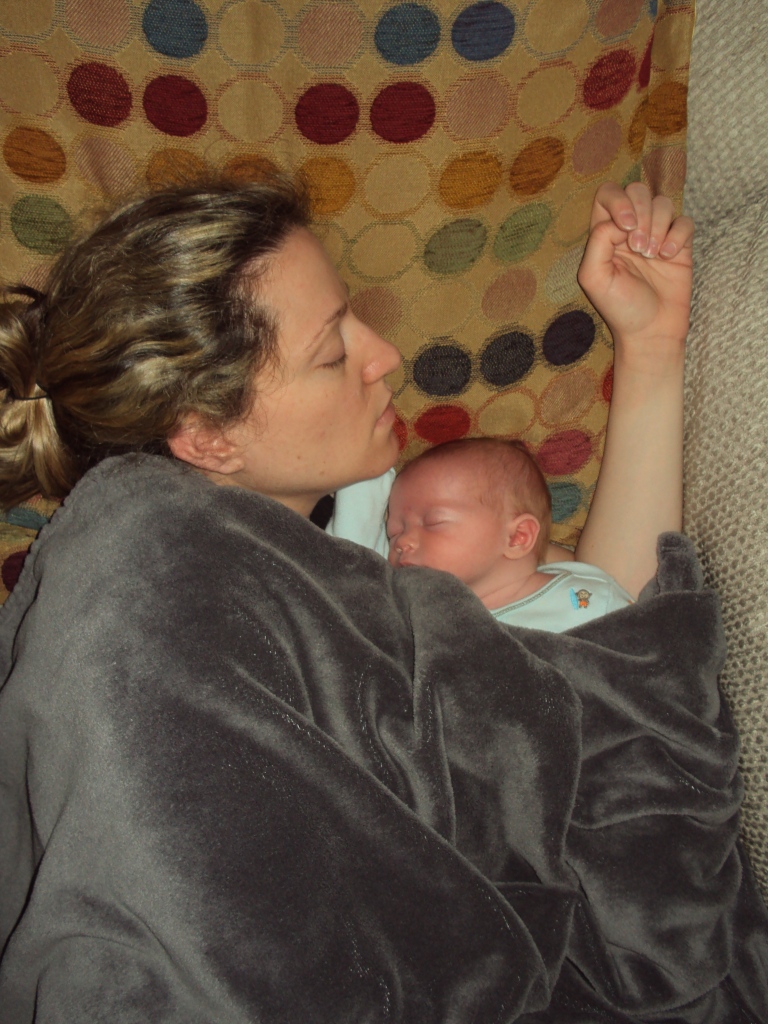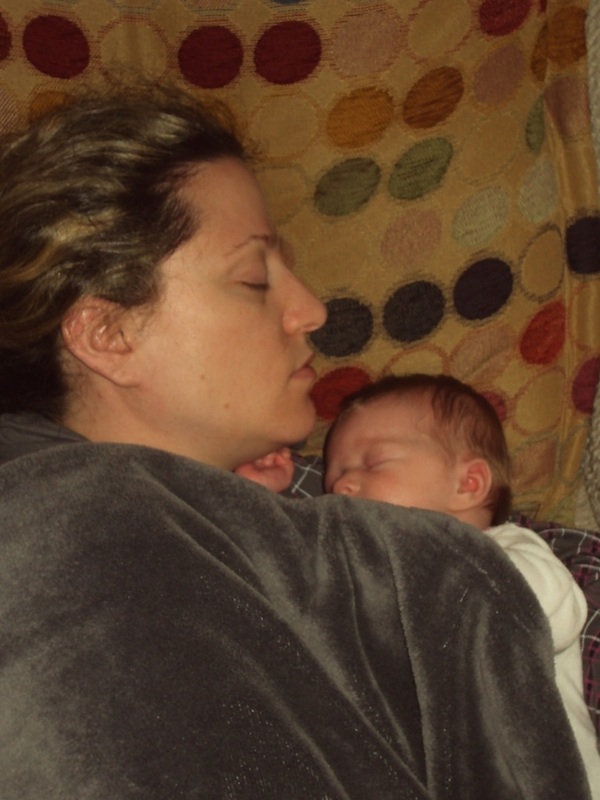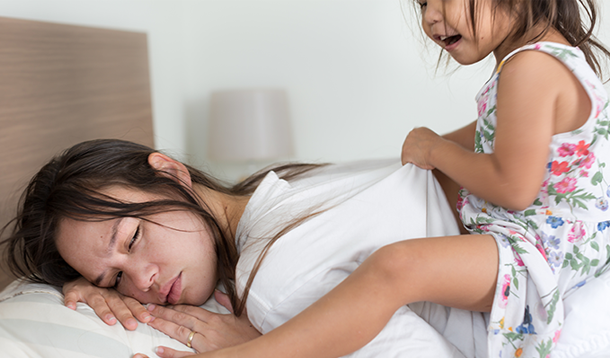
I remember when the twins where infants and my husband and I were in survival mode. Knowing that our 3.5 year old wouldn’t be letting us sleep in most mornings, getting our sleep throughout the night was critical to be able to function well enough to care for these three little ones, as well as care for us. But you have a baby (or babies in my case) and you are going to be up throughout the night. It’s going to happen, as it should, and sometimes as parents we make decisions throughout the night just to get that extra hour of sleep. Decisions that could potentially be harmful to our baby.
Guilty.
That’s me - sleeping on the couch with my son.

And daughter.

And I knew better.
But I needed that hour of sleep.
When I speak to new parents one of the first questions I ask is “who co-sleeps?” I then correct myself and ask “who is making the lifestyle decision to bed share and whom is reactively bed sharing?” Most hands sheepishly raise for the latter. When I look at these pictures of myself so many what-ifs enter my mind but I was reactively finding a solution to my sleep deprived situation and it was the most dangerous route I could have taken.
Don’t be me.
Today the The American Academy of Pediatrics released an updated 2016 report on their safe sleep environment recommendations. Included in the report are their previous recommendations of the ABC’s of safe sleep:
As a sleep professional I do follow the guidelines and sleep recommendations of the AAP on lowering the risk of SIDS and other sleep-related infant deaths with my client’s, as does my team. We leave the duration of room sharing up to parents and have helped many families sleep train while continuing to safely room share.
What’s now included in the AAP’s recommendation are safe sleep practices if choosing to bed share because here’s the thing - even though organizations like the AAP or Good Night Sleep Site recommend not sharing an unsafe sleep environment with your infant, parents are exhausted and when exhausted make unsafe decisions like falling asleep on the couch while breastfeeding. The AAP now recognizes that and rather than not saying don’t do it, it’s unsafe, they know the importance of educating parents on the safest route to take to bed-share and that it is a big lifestyle decision and one that needs a plan with both partners on board. If you are going to fall asleep while breastfeeding do it in the safest way possible.
Parents need a plan. They need to know what will be involved in safely preparing their sleep environment for bed sharing and everything needs to be implemented to the fullest extent before the baby is ever in bed with either parent.
I stand behind the American Academy of Pediatrics and choose room sharing as the safer route but I also feel it’s my responsibility to educate parents on the safest steps of whichever sleep environment is chosen.
Don’t be me.
There is always a safer way of doing it and educating yourself is the first step.
I provide free child and family sleep support on my Facebook page. I invite you to join our sleep community as I work towards Good Night Sleep Site's mission of a healthier rested family unit. For more sleep tips please visit Good Night Sleep Site and visit me on Instagram and Twitter. Join our movement and #BringBackBedtime.

There’s a lot to love about the fall. Fresh air. Kids back in school. Cozy sweaters. Pumpkin spiced everything. Yet, as the leaves start crunching underfoot, you’ll find parents everywhere silently cursing this time of year. Why? Because of the dreaded time change.
Just as it does in spring, the daylight saving time in fall brings about interrupted sleep schedules and a period of adjustment. It’s rarely fun – but, eventually, our body clocks will adjust on their own. In the meantime, here are a few ways you can help get your entire family back on track.
If you already have one, keep practicing the same sleep routine you normally do to help prepare your child for sleep. The familiarity is comforting and will help your child know that sleep is coming next. If you don’t have one – start practicing one! Children thrive off of routine and a consistent, calming bedtime routine can be a great way to help kids drift off. Give yourself 30 minutes before your child’s set bedtime to allow enough time to focus on calming activities that will help make your child sleepy. You can try sleep props like white noise machines, or the tried-and true method of story time. Yoga and meditation are both excellent ways to relax your child before bed, too. This is also a great opportunity to get some attachment time in with your little one.
Remove phones, tablets and other tech and electronics from your night table (and your kids’ rooms) before bed. Electronics right before bedtime makes it more difficult to fall asleep and results in less restorative sleep. You don’t need anything that’s going to mess up your sleep schedules any further at this time – so set some tech boundaries and limits at bedtime.
If your little one starts waking up earlier than usual during the time change, try your best not to start the day at this new time. If your baby is in a crib, let them hang out for a while! A little quiet time won’t hurt – and they may just fall back asleep for a bit. As tempting as it may be, try not to start new habits that may be hard to break – like feeding or rocking your back to sleep.
We parents need to protect our sleep just like our kids. There’s actually a higher occurrence of reported traffic accidents after time changes – so now is the time to make sure you’re getting enough rest as well. Practice the same habits you preach to your kids.
Nobody can get a great night’s sleep if your mattress isn’t meeting your needs! The proper support and comfort are essential to help you get the most out of your sleep. If your mattress is older than 7 years, you may want to start looking into a new one. Especially if you find your current one is keeping you up at night. Again, you don’t need anything else interrupting you or your family’s sleep on top of the time change!
My best advice is to just hang in there. The shift in this new schedule normally takes a week or two for everyone to adapt to. And above all else, remember my two favourite words: persistence and consistency.